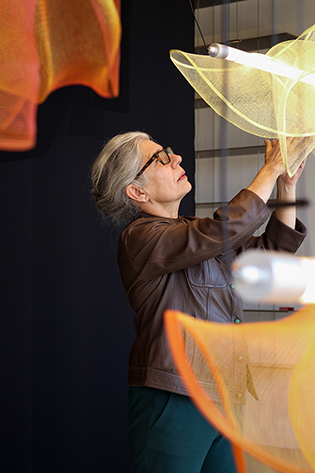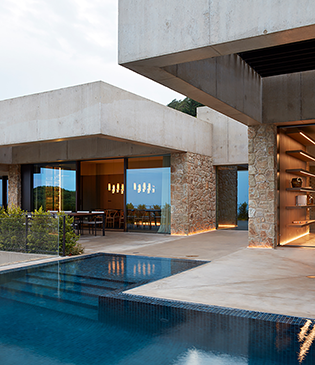“LZF embraces the concept of biophilia, emphasizing the innate connection between humans and nature. They prioritize designing for people with care while respecting the environment, aiming to grow and learn in harmony with it.”
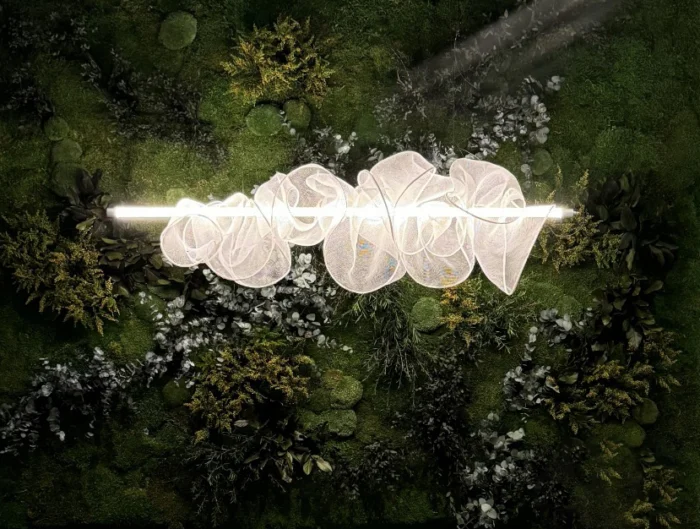
The Cloud Lamp with a 100% natural plant-based composition by Greenarea
Biophilic Design: Connecting with Nature for Sustainable Well-Being
Incorporating natural elements into our living spaces not only provides a relaxing aesthetic, but also has a direct impact on our emotional and mental well-being. Biophilic design builds on this fundamental connection between humans and nature, creating environments that promote peace, health and harmony. Through natural materials, such as wood, and concepts that evoke the beauty of the natural world, biophilic design seeks to create more humane and welcoming spaces.

Link lamp in private residence. Project: Malangen Retreat, Norway
Nature as a source of inspiration
Biophilic design goes beyond simple decoration; it is a philosophy that integrates nature into the heart of architectural and interior design. Elements such as natural light, plants and organic materials play a crucial role. This approach aims to connect people with their natural surroundings, even within the most urban spaces, creating a sense of balance and tranquillity.

Totem lamp
Biophilic lighting: The transformative power of natural light
Biophilic lighting harnesses the power of natural light to transform indoor spaces. Like natural light cycles, biophilic lighting impacts mood, productivity, and well-being. Designer lamps made from natural materials, such as wood, enhance aesthetics while fostering a deeper connection with nature. Handcrafted wooden lamps offer warm, comforting light that promotes sustainability and transforms spaces into calming sanctuaries, ideal for relaxation and meditation.
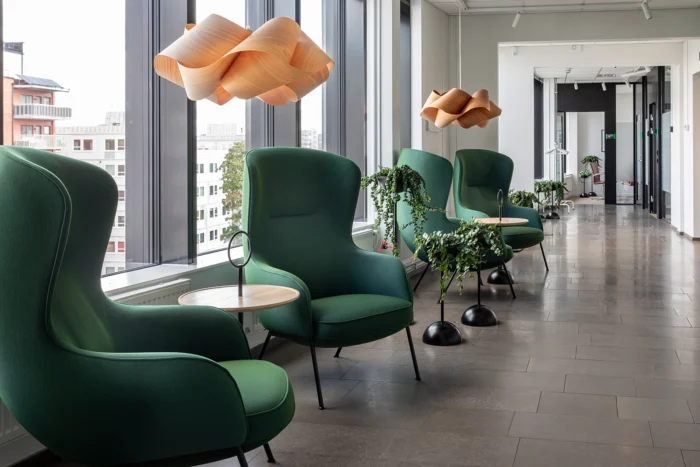
Sustainability as a pillar of biophilic design
In an increasingly environmentally conscious world, biophilic design is not only aesthetically appealing, but also ecologically responsible. Using sustainable materials, such as responsibly sourced wood, and reducing the use of plastics and metals is a way to create a healthier environment for both people and the planet. By opting for biophilic products, such as handmade wooden lamps, we are not only investing in design, but also in a more sustainable future.
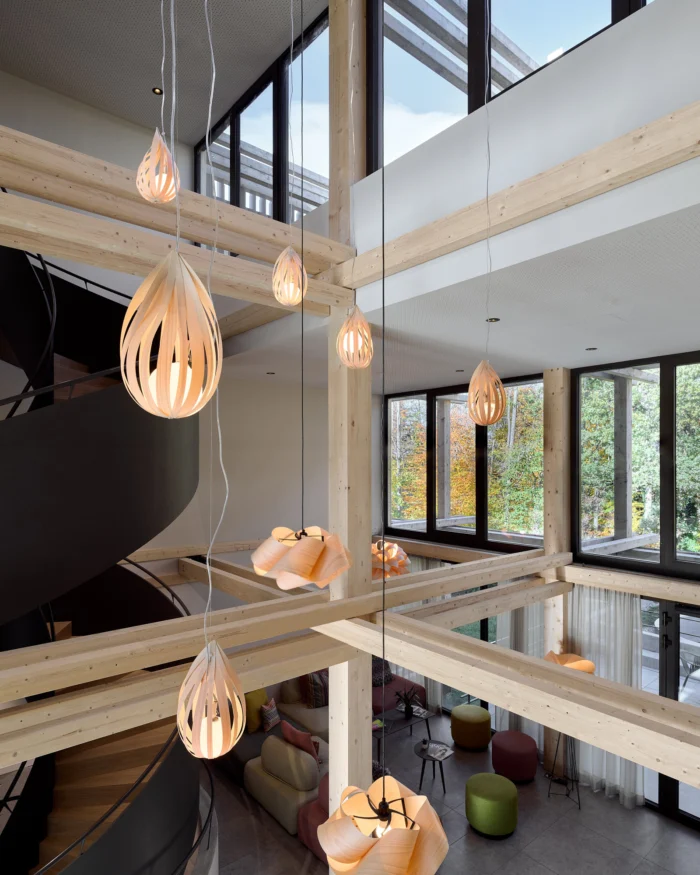
Raindrop & Swirl lamps in Bergeblik Hotel, Germany
Psychological benefits of biophilic design
Being surrounded by nature-inspired elements has a direct effect on our mental health. Studies have shown that people who connect more with nature tend to experience higher levels of personal satisfaction and emotional well-being. Biophilic design invites us to reconnect with our origins and the natural world, giving us a sense of calm and wholeness that goes beyond simple decoration.
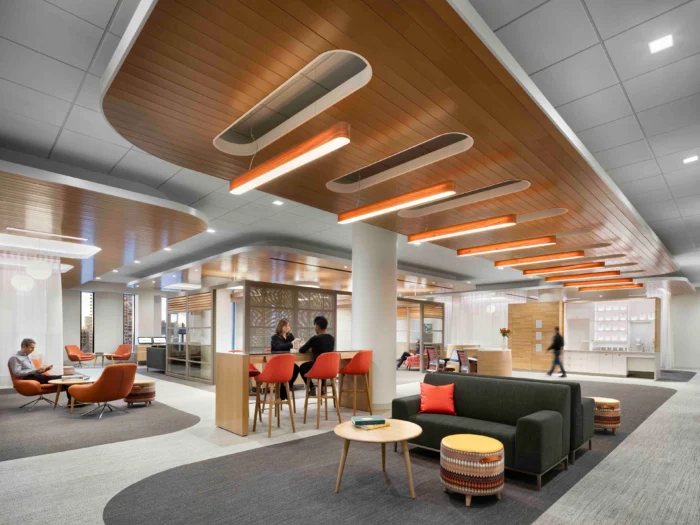
I-Club lamps by LZF in David H. Koch Center for Cancer Care at Memorial Sloan Kettering Cancer Center (MSK)
Versatility in design: Adapting nature to every space
One of the great advantages of biophilic design is its versatility. Natural materials, such as wood, can be easily integrated into a variety of decorating styles, from rustic and traditional to modern and minimalist. This allows every space, whether it is a city flat or a cottage in the countryside, to benefit from the serenity and warmth offered by contact with nature.
In short, biophilic design is not just a decorative trend, but a response to the need to reconnect with nature in our daily lives. The incorporation of natural materials, such as wood, together with lighting inspired by the cycles of nature, can transform any space into a haven of well-being and tranquillity. By integrating these elements, we not only improve our quality of life, but also make a conscious effort to care for our planet.
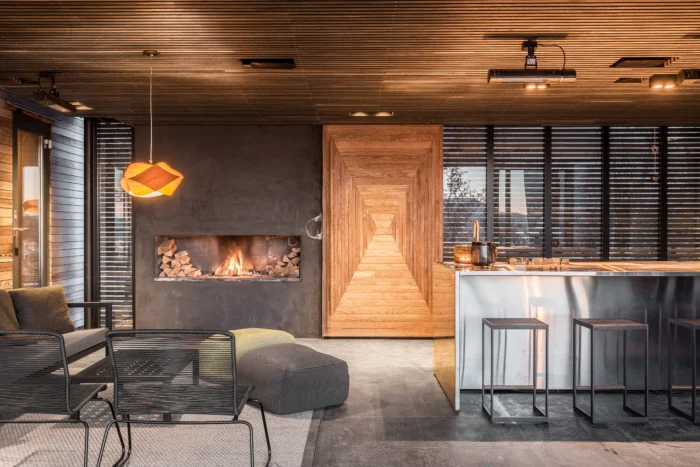
Nut lamp in private residence. Project: Malangen Retreat, Norway








